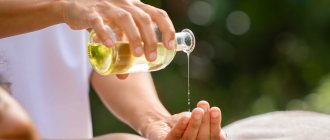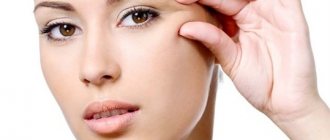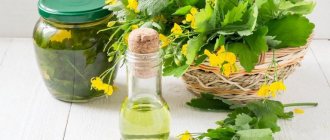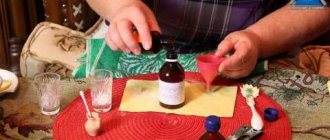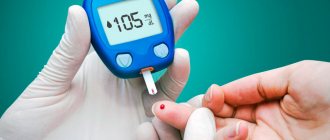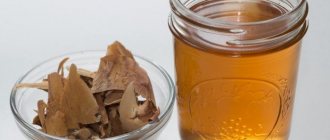Appearance
As mentioned above, the appearance of the badyagi sponge is very reminiscent of some not very attractive algae. Most of all, it resembles a small bush, consisting of irregular tree-like shoots. In warm water and with good nutrition, their length can reach a whole meter!
You can see them on many underwater objects - from snags and large stones, to bridge supports and the bottoms of ships.
The color range is quite extensive. A sponge can be green, brown, yellowish and even gray - this largely depends on the composition of the water and the type of bottom where it lives.
Badyaga for cellulite
Today, about 50% of women suffer from cellulite. A ridiculous orange peel spoils the appearance of the fair half. Cosmetologists strongly advise using expensive anti-cellulite masks, which bring little results. Badyaga is a universal assistant in the fight against cellulite. Massages can be performed at home.
Types of massage mixtures with badyaga for cellulite for weight loss
- Badyaga and honey.
- Badyaga and vegetable oil. You can add a few drops of your favorite essential oil (lavender, orange, fir, oregano).
- Badyaga and wheat germ oil.
These mixtures can be used to massage problem areas. A course of cosmetic procedures up to 10 days.
Wraps with badyaga
The following combinations are suitable for wraps:
- Badyaga and mumiyo. Dissolve mumiyo and bodyaga in different containers and mix until smooth.
- Bodyaga and coffee scrub for cellulite. The sponge will enhance the cosmetic effect.
- Bodyaga, sea salt, vegetable and essential oil of fir or pine.
- Bodyaga, warm water, fennel or dill oil.
- Blue clay, bodyaga.
When wrapping, the main rule is to not tighten problem areas with cellophane too tightly (legs and all other parts of the body should not go numb). The blood flow must be normal, or there will be no effect.
Masks with bodyaga are also used for the growth of eyebrows and hair on the head. Thanks to improved blood circulation in the skin, hair begins to grow faster.
Taking bodyagu internally due to the presence of silicon needles is prohibited.
Tags: skin, masks, rejuvenation, drugs
- Related Posts
- How to relieve swelling of the legs and get rid of swelling at home
- What types of nose shapes exist and what can be said about the character of their owner?
- What are the different shapes of cheekbones, examples in the photo. How to make your cheekbones stand out with makeup.
« Previous entry
Area
You can meet the sponge badyagu in almost any fresh body of water - from harsh subarctic regions to the equator. It inhabits rivers, lakes, ponds, streams and small swamps, preferring to live at a relatively shallow depth, well heated and illuminated by the sun. Having seen one sponge, you can be sure that there will be many others nearby - they almost always live in colonies, and once they are moved to a new place, they multiply quite quickly, occupying quite large spaces.
Moreover, the sponge is quite picky about the quality of water. In reservoirs that are too dirty or into those into which water containing industrial waste is discharged, it dies quite quickly. Therefore, we can say with confidence that the presence of badyagi in a reservoir is a good sign, indicating that the water in it is clean and safe.
She also lives in our country. More precisely, there are even as many as twenty types of badyagi sponges! Among them is a completely unique Baikal one. It has a more rigid skeleton.
Structure
As you can see in the photos attached to the article, the badyaga sponge most resembles a cluster of individual elongated processes. The backbone is a skeleton made of tiny silica spines (also known as spicules) and spongin, a special type of protein.
The special color of the animal is given by unicellular algae, with which the sponge lives in close symbiosis. Algae occupy any voids in the skeleton and also cover the entire surface of the sponge. They, as befits green algae, produce oxygen in the light, which the badyaga consumes, like any living organism. In return, the algae receive the necessary carbon dioxide, which is not always enough in the water.
The sponge feels rough to the touch, and if you press it too hard or rub a small piece between your fingers, you can feel subtle pricks, which will lead to minor inflammation. This happens due to microscopic damage to the skin by spicules. It is also easy to smell the unusual smell of pickled cucumber.
Contraindications
Using badyagi can cause side effects such as rash, itching, burning, and skin inflammation. If these are not signs of individual intolerance, then most likely the result of non-compliance with recommendations for use.
You should not use the following:
- in the presence of inflammatory processes on the skin;
- with hypertrichosis (increased hairiness);
- with obvious damage to the skin in the form of cuts, scratches and others;
- children under 12 years old.
If you are prone to allergic reactions, it is better to first conduct a small test - apply a small amount of powder diluted with water to the inner surface of the elbow. 15 minutes will be enough to understand whether you are allergic to bodyaga.
Lifestyle
If, while studying the structure of the badyagi sponge, you take a closer look at it, you will notice that almost its entire body is pierced by the finest chambers and channels. Water passes through them. A weak but sufficient flow is provided by special flagella covering the walls of these chambers. These flagella move water through the body with rhythmic movements, and at the same time catch any particles suitable for digestion. Then the captured food is transferred to special amoeboid cells, which carry out digestion.
Thus, badyaga is a biofilter organism that purifies water from biological debris. Even a small shoot about 10 centimeters high drives about twenty liters of water through itself per day, ensuring the cleanliness of the reservoir.
Instructions for use. Dosage
Before applying the product to the skin, you must study the recommendations for using Badyagi in the instructions for use.
the product in powder form consists of colonies of freshwater sponges, dried and crushed
For powder
The powder is used externally. The method of its application depends on the problem at hand.
For bruises and bruises, the contents of the sachet are diluted with warm boiled water (you should get a paste-like mass). The resulting mixture is applied to the affected area using a cotton pad or swab, then rubbed into the skin in a circular motion. The composition is left for 10-15 minutes and washed off with water. You need to wear rubber gloves when handling the medicine.
If you have radiculitis, neuralgic or rheumatic pain, you need to dilute the powder with sunflower oil (you should get the consistency of sour cream). The finished product should be applied to the skin and left for 24 hours. If a strong burning sensation occurs, rinse with water.
A mask consisting of powder and hydrogen peroxide helps against acne and post-acne. The components are mixed in equal proportions, after which they are applied in a thin layer to the skin of the face. After 10-15 minutes, the product can be washed off, because its therapeutic effect reaches its maximum (it is manifested by a slight tingling sensation and a feeling of warmth - effects due to local improvement of blood circulation).
Use a cotton pad to remove the mask from the skin. The composition is removed carefully, trying not to put pressure on the skin or rub it. Then the residues are removed with warm water. The eyes must be closed so that the components of the drug do not get on the mucous membranes of the eyes. Failure to do so may result in severe irritation.
On gel
Badyaga gel for bruises and other defects is used in its pure form. It is applied in a thin layer to the face, left for 10-20 minutes and washed off with warm water. The final stage is the application of a softening nourishing cream. It is better to carry out the procedure in the evening, since it is advisable to stay indoors for 2-3 hours after it.
Apply the product to other areas of the body using light circular movements. It is recommended to wash off the composition after 20-30 minutes. If there is no access to warm water, you can remove the remaining gel using a damp cloth.
In addition to the main component, the gel contains additional ingredients in the form of glycerin and other excipients
For whitening and exfoliation, the drug is used once every 7 days. If necessary, the number of procedures is increased to 3 per week. If there are bruises, the product is used 3-4 times a day. Treatment continues until the hematoma disappears.
Interaction
It is unknown what effects occur when other substances and drugs are used simultaneously. If necessary, you can consult a doctor.
Life cycle
In warm regions, where even in winter the temperature does not drop below a certain level for a long time, badyaga lives all year round and reproduces successfully. Moreover, in this case, sexual reproduction is predominantly used.
The situation is completely different in countries with a harsher climate, for example, in Russia. The badyaga lives here for only a few months. After the water in the reservoirs has warmed up to the optimal temperature, the tiny gemmules become active. They are buds with a diameter of about one millimeter. The spherical body is protected by a durable silica shell, which provides it with reliable protection both from any hostile organisms and from unfavorable environmental conditions. Even if the cell is frozen in ice, it does not die. The same thing happens when water bodies dry out - the gemmule survives in the most difficult conditions, with low humidity and a wide range of temperatures, for several years. Quite often they are transported over long distances by waterfowl, and when the reservoir completely dries out, by strong winds.
In the spring, the shell disintegrates, and a tiny sponge emerges from the gemmule, which selects a suitable place, attaches itself to it and begins to actively feed, growing quite quickly.
With the approach of the cold season and a decrease in water temperature, the adult badiag dies off, leaving behind many gemmules, which will hatch in the spring and the whole cycle will repeat.
Benefits and harms brought
Of course, one of the main useful properties of badyagi is filtration, which has already been mentioned earlier. Due to the fact that the sponge is a biological filter, in a reservoir where a sufficient number of them live, the water is always cleaner - not only single-celled microorganisms are destroyed, but also particles of dead animals and fish that rot and, as a result, pollute the environment.
We’ll talk about human use and the benefits a sponge brings to him a little later - this topic is very extensive.
However, this amazing animal can also cause significant harm. For example, if a tiny gemmule somehow passes through the filtration system and ends up in sewer pipes, it will grow here quite quickly - the water is quite warm, and there are more than enough nutrient particles. As a result, it may well clog the entire pipe. Moreover, it is rarely possible to remove the blockage using conventional means - specialists have to look for where the sponge is and remove it, which takes a lot of time and effort.
Human use
Dried and thoroughly crushed badiaga is used for rubbing for rheumatism and other diseases. Mild inflammation of the skin leads to warming up of the muscles and, as a result, a decrease in pain. In addition, ointments are made from sponges that help get rid of bruises.
In ancient times, women often used badyagi powder to create a blush. After rubbing, the cheeks became slightly inflamed and acquired a reddish tint, which can easily be confused with a healthy blush. What sacrifices do women have to make for the sake of beauty!
Local residents use Baikal badyaga when cleaning various metal surfaces instead of an iron brush.
For some time, Russia even successfully exported sponge to some European countries, such as Germany.
Useful properties of badyagi
The ability of river sponge preparations to irritate the skin and nerve endings causes biologically active substances to activate and accelerate the redox reactions of the skin and subcutaneous layer. Therefore, products from badyagi or preparations containing it are useful in the following cases:
- used to accelerate the healing of superficial injuries;
- help with radiculitis;
- recommended for myalgia - painful sensations in the muscles;
- relieve bruises;
- used for joint pain;
- used in the treatment of neuralgia of the muscular nerves;
- heal bruises;
- help get rid of freckles, acne, age spots;
- promote skin rejuvenation;
- recommended for neuralgic diseases.
